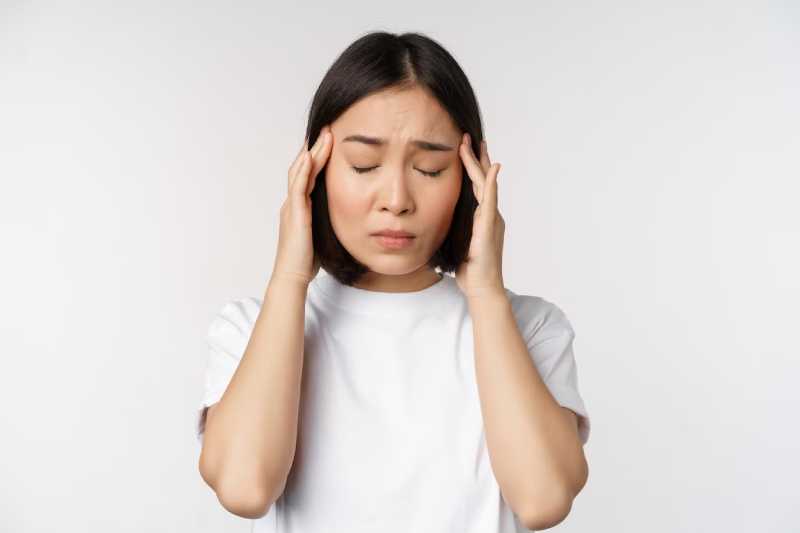
Headaches and migraines are common medical conditions that affect many people, often causing significant pain and discomfort. If you’re experiencing frequent or severe headaches or migraines, seeking medical attention at urgent care in Fairfield, CT, can provide you with the relief you need. In this blog post, our healthcare experts at DOCS Urgent Care & Primary Care Fairfield will discuss the differences between headaches and migraines, how to identify them, and effective methods for relief.
Headaches are a common ailment that affects millions of people worldwide. Various factors, including tension, sinus pressure, and dehydration, can cause them. Headaches are typically classified into tension, cluster, and sinus headaches.
Tension headaches are the most common headache, usually caused by stress, anxiety, or tension in the neck and shoulders. These headaches typically cause mild to moderate pain that feels like a band tightening around the head. Tension headaches can last anywhere from a few minutes to several days.
Cluster headaches are less common but more severe than tension headaches. They cause a sharp, intense pain that usually occurs on one side of the head. Cluster headaches can be triggered by alcohol, tobacco, or certain foods. They can also occur suddenly and without warning, often in a series of attacks lasting weeks or months.
Sinus headaches are caused by sinus pressure and inflammation, often felt in the forehead or around the eyes, and can be accompanied by other symptoms such as a stuffy nose or fever. Allergies, colds, or sinus infections can trigger sinus headaches. A healthcare provider at urgent care in Fairfield, CT can evaluate your symptoms and provide appropriate treatment to help manage your condition and alleviate your symptoms.
While the exact cause of headaches is unclear, certain factors can increase the likelihood of experiencing a headache. These include:
Headaches can cause a range of symptoms, depending on the type and severity of the headache. Some of the most common symptoms include:

Migraines are one of the top reasons for visits to urgent care in Fairfield, CT due to their severe and debilitating nature. They are a type of headache that is typically more intense than other types and can significantly impact daily life. Migraines are usually caused by a combination of genetic and environmental factors, as well as specific triggers such as certain foods or changes in weather.
Migraines can be classified into two main types: migraine with aura and without aura.
Migraine with aura is a type of migraine that is characterized by visual disturbances that occur before the headache starts. These visual disturbances can include seeing flashes of light, blind spots, or other changes in vision. Other migraine symptoms with aura may include tingling in the face or hands, difficulty speaking, and confusion.
Migraine without aura has no visual disturbances that occur in migraine with aura. However, it still causes a pulsing and sharp pain on one side of the head and is often accompanied by other symptoms such as dizziness, nausea, and sensitivity to light and sound.
Migraines are a complex neurological condition with many potential triggers. Identifying these triggers can help individuals prevent or reduce the frequency and severity of migraines. In this section, we will explore some common migraine triggers.
Migraines can run in families, indicating that there may be a genetic component to the condition. If a family member experiences migraines, it increases the likelihood of other family members experiencing them as well.
Environmental factors, such as changes in weather or air pressure, can trigger migraines. For some people, exposure to strong smells, loud noises, or bright lights can also trigger migraines.
Migraines can be brought on by hormonal changes that occur in some people during significant life events such as menstruation, pregnancy, or menopause. These fluctuations in hormones have been known to act as a catalyst for migraines in susceptible individuals.
Stress and anxiety can trigger migraines in some people. It’s important to manage stress and practice relaxation techniques to reduce the likelihood of migraines.
Certain foods and drinks can trigger migraines in some people. Common triggers include chocolate, caffeine, alcohol, and processed foods. Keeping a food diary can help individuals identify which foods and drinks trigger their migraines.
Changes in sleep patterns, such as getting too little or too much sleep, can trigger migraines in some people. It’s important to establish a regular sleep routine and get adequate sleep to prevent migraines.
Migraines can cause a range of symptoms, depending on the type and severity of the migraine. Some of the most common symptoms include:

It can sometimes be difficult to distinguish between headaches and migraines because their symptoms can overlap. However, a few key differences can help you identify which condition you are experiencing.
The pain of a migraine is typically more severe than a headache. Migraine pain is often described as throbbing and sharp pain and usually occurs on one side of the head. Headache pain, on the other hand, is usually described as a dull ache or pressure.
Migraines are often accompanied by other symptoms such as vomiting, nausea, sensitivity to sound and light, and dizziness. Headaches may also be accompanied by these symptoms, but they are less severe.
Headaches usually last for a short period, whereas migraines can be prolonged, lasting for several hours or even days. If you’re experiencing long-lasting headaches or migraines, seek urgent care in Fairfield, CT
Migraines tend to occur less frequently than headaches. Migraines may occur a few times a month or even less frequently, while headaches may occur several times a week.
There are several ways to find relief from headaches and migraines, including medications, lifestyle changes, and alternative therapies.
Medications can be an effective way to treat headaches and migraines. Several types of medications are available, including over-the-counter pain relievers and prescription medications from urgent care in Fairfield, CT.
Over-the-counter pain relievers such as acetaminophen, ibuprofen, and aspirin can effectively treat mild to moderate headaches and migraines. These medications work by reducing inflammation and relieving pain.
If over-the-counter pain relievers are ineffective in treating migraines, a doctor may prescribe prescription medications such as triptans, beta-blockers, and antidepressants. These medications target specific symptoms of migraines, such as pain, nausea, or sensitivity to light.
Triptans are a medication that constricts blood vessels and blocks pain pathways in the brain. They are typically used to treat moderate to severe migraines and can be taken orally or as a nasal spray.
Beta-blockers are a type of medication typically used to treat high blood pressure, but they can also effectively prevent migraines. They work by blocking the effects of certain hormones that can trigger migraines.
These medications are often used to treat depression, but they can also be effective in preventing migraines. They work by altering the levels of certain chemicals in the brain that can trigger migraines.
Lifestyle changes can play a crucial role in preventing headaches and migraines. By making some simple changes to your daily routine, you can reduce the frequency and severity of headaches and migraines.
Stress is one of the most common triggers for headaches and migraines. Stress reduction techniques such as yoga, meditation, and deep breathing exercises can help reduce tension and stress that can trigger headaches and migraines. These techniques promote relaxation and improve mental and physical health.
Regular exercise can help prevent headaches and migraines by reducing tension and stress in the body. Exercise also promotes the release of endorphins, which are natural painkillers that can help relieve headache pain. However, starting slowly and gradually increasing your activity level is essential to avoid triggering a headache.
Lack of sleep can lead to fatigue, stress, and other factors that can trigger headaches and migraines. Aim for 7-8 hours of sleep each night and establish a regular sleep routine to promote healthy sleep habits.
A healthy diet can also help prevent headaches and migraines. Certain foods and drinks, such as caffeine, alcohol, and processed foods, can trigger headaches and migraines. Eat a balanced diet with whole foods and plenty of fruits and vegetables.
Alternative therapies can be an effective way to manage headaches and migraines. These therapies are often used with traditional medical treatments and can help reduce the frequency and severity of headaches and migraines.
Acupuncture is a traditional Chinese medicine practice that involves the insertion of fine needles into specific points of the body. Acupuncture is effective in reducing the frequency and severity of headaches and migraines. It works by promoting the release of endorphins, which are natural painkillers, and reducing tension and stress in the body.
Massage therapy is a hands-on therapy that involves the manipulation of soft tissues in the body. It can help reduce tension and stress in the body and promote relaxation. Massage therapy effectively reduces the frequency and severity of headaches and migraines.
Biofeedback is a technique that involves monitoring and controlling bodily functions such as heart rate, breathing, and muscle tension. It can help reduce tension and stress in the body and promote relaxation. Biofeedback is effective in reducing the frequency and severity of headaches and migraines.

While most headaches and migraines can be treated with over-the-counter pain relievers and lifestyle changes, certain red flags indicate the need for urgent care in Fairfield, CT.
If you experience, a sudden onset of severe headache could be a sign of a more serious condition such as a brain aneurysm or stroke. Seek medical attention immediately if you experience a sudden, severe headache different from your usual headaches.
If you experience headaches accompanied by neurological symptoms such as confusion, dizziness, or weakness, immediately seek urgent care in Fairfield, CT. These symptoms could indicate a serious condition, such as a brain tumor or aneurysm.
If you experience headaches after a head injury, seek medical attention immediately. These headaches could indicate a concussion or other serious head injury.
If you are experiencing frequent or severe headaches or migraines, seeing a doctor is a good idea. Your doctor can help you determine the cause of your headaches and recommend the best course of treatment, including lifestyle changes, medications, and alternative therapies.
If your headaches or migraines are affecting your ability to perform daily activities or impacting your quality of life, seek medical attention at urgent care in Fairfield, CT. A healthcare provider can evaluate your symptoms and provide appropriate treatment to help manage your condition and alleviate your symptoms.
Headaches and migraines are two common ailments that can be difficult to distinguish. While both conditions can cause pain and discomfort, they have distinct characteristics that require different treatment approaches. By understanding the differences between headaches and migraines and taking steps to manage them effectively, you can find relief from the pain and discomfort they cause. If you’re looking for urgent care in Fairfield, CT, DOCS Urgent Care & Primary Care Fairfield is here to assist. With our experienced medical professionals and convenient walk-in appointments, we can help you get back to feeling your best. Contact us today to learn more about our services and schedule an appointment.

During this surge in COVID-19 cases, our primary focus is meeting the high demand for tests, and we are seeing higher than usual wait times. This means we are unable to answer most phone calls. Please know that our teams are working very hard during this time to care for as many patients as safely as possible. Please click the button below for answers to common questions. We appreciate your understanding.